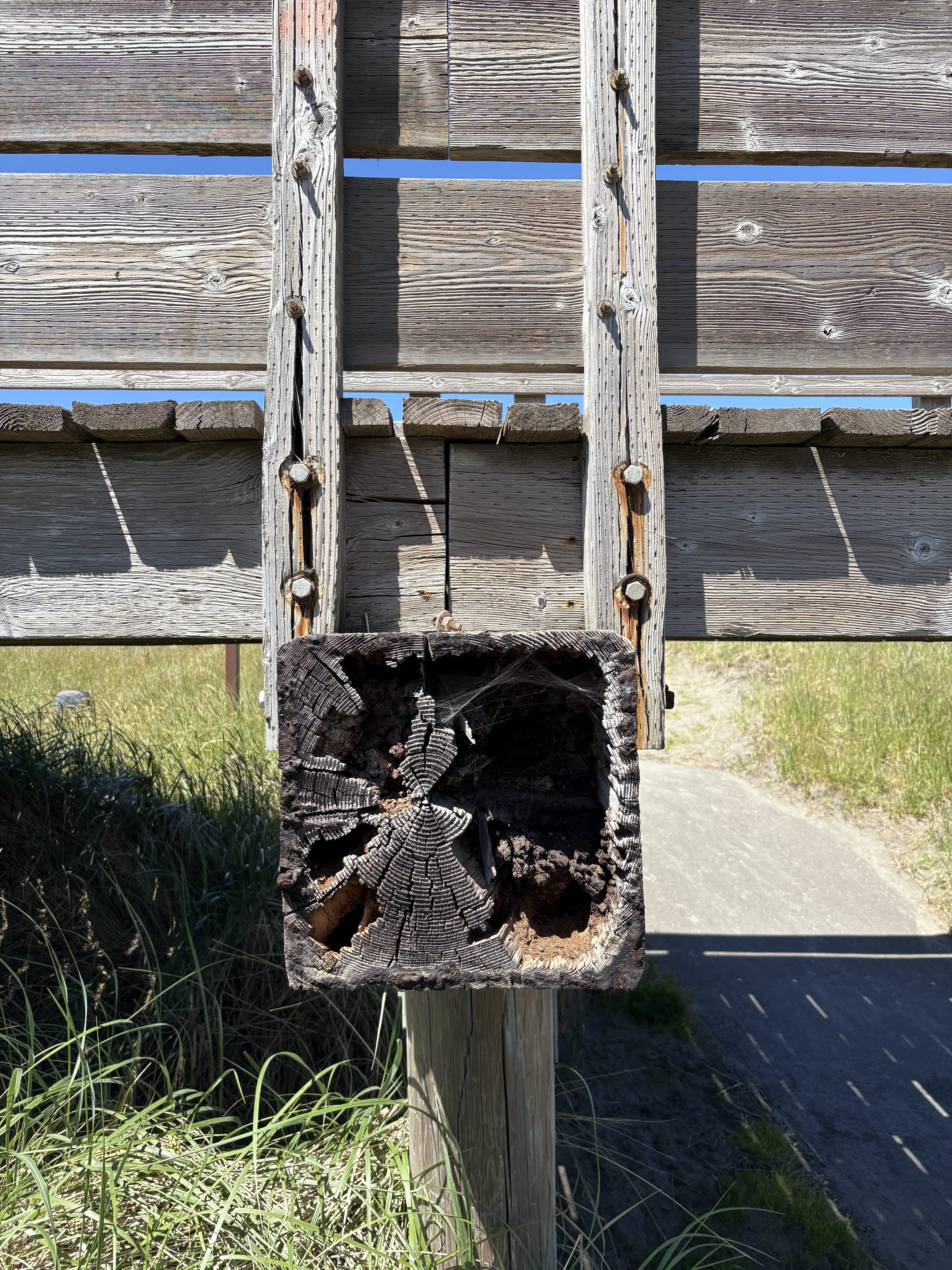Legendary beachcombing: 2 + 2 = 4 Japanese glass floats
Published 9:45 am Tuesday, July 21, 2020

- While combing the beach as a NOAA volunteer, John Weldon has found enough plastic fishing floats to line his walking path.
Up to that four-float day in May 2020, beachcombing had been bountiful compared to years past. I’ve done very well with combing a good amount of long-range debris, from many different-colored plastic fishing floats to plastic Japanese survey sticks, as well as numerous glass fishing floats. Little did I know that beachcombing would get even better as May approached.
Trending
As a retired 25-year officer from the U.S. Air Force, I decided to name the Long Beach Peninsula as my final retirement destination. To keep me busy, I volunteered for NOAA, reporting washed in stranded mammals, which in turn gets me out on the beach regularly. Of course I immediately picked up the hobby of beachcombing, since majority of my weekdays were spent on the beach.
With the covid virus starting up and a “beach closed to vehicles” rule set in place early in 2020, it was challenging to cover a good amount of beach in a short duration. So I parked my vehicle and enlisted a trusty bike. I wired a milk crate on the back to collect treasures I might come across.
Routine ride turns into something more
The four-float day started like any other. At 5 a.m., I was up, donned with rain gear and on my bike to ride the four-mile stretch from Ocean Park to Leadbetter lighthouse. As I soon as I started the bike ride on the beach, I noticed an unusually high amount of long-range debris — gooseneck barnacles attached, which is a tell-tale sign that combing might get interesting. I continued north and happened upon a partial plastic kid’s log raft and numerous Japanese bottles, along with smaller plastic fishing floats.
I quickly stopped my bike and to my astonishment saw what caught my eye ‚ a 7-inch glass shark roller slowly tumbling in with the current and within a few feet of my position.
As I continued to bike north, the weather was overcast with some glimpses of the early rising sun. With Ocean Park approach behind me, I was able to make out something large about half a mile north as I came closer to the Oysterville approach. Picking up numerous long-range plastic fishing floats and Japanese bottles, I finally approached the large mass I had noticed earlier. To my surprise, a 12-foot elephant seal which had been dead for some time had washed in. I immediately noticed some long-range barnacles had collected all along the animal. I stopped and took a few pictures for a NOAA report I would put together later that morning. Continuing north from the washed up elephant seal, I noticed a considerable amount of small plastic long-range floats. Just as I thought to myself that it wouldn’t surprise me to see a Japanese glass float, I literally biked right up to a nice baseball-size glass float with a Japanese “flowing river” makers mark. To my delight, the float was unblemished and its mark was easily recognized.
After doing a quick “glass float” finders dance and taking a few photos, I loaded up my bike and continued north toward Oysterville approach.
Didn’t bike no more than 100 yards and I pulled up on yet another dead animal. This time it was a porpoise that measured around 5 feet in length. I took a video and several photos for my NOAA report.
Shark roller
I climbed back on my bike and continued north. Just as I passed the Oysterville approach, I noticed the first sign of other beachcombers about a 1/2 mile north of me. Just before I got to the drainage flow north of the approach and no less than 25 yards from the two other combers, I caught something bright green and of a considerably odd shape. I quickly stopped my bike and to my astonishment saw what caught my eye‚ a 7-inch glass shark roller slowly tumbling in with the current and within a few feet of my position. The tide was still coming in, so I quickly dismounted my bike and took a few photos and video of my find before the current came back in.
I had found two other common Japanese glass rollers earlier in the combing season but what made this find that much more special is the rarity of a “shark roller” being beach combed. Most of the shark gillnet fishery rollers are found in stockpiles over in Japan rather than beach combed. I can count on one hand how many of these magnificent rollers have been found on the peninsula in recent years.
After carefully loading my second treasure of the morning in my makeshift bike basket, I set out north toward the Leadbetter Farms lighthouse.
Two more beachcombers
I eventually reached the couple, who turned out to be two ladies beachcombing on bikes. I shared both my earlier finds and they showed me a wonderful older Japanese survey stick they had just found. We said our goodbyes and good lucks and I continued north and the two ladies continued south.
Long-range debris continued to wash in, along with strange debris. This included heads of broccoli, an older aluminum fishing float and a small Japanese canister of cigarettes. As I stopped and picked up these items, I finally made out the Leadbetter lighthouse, which stands about 2-3 miles north of Oysterville approach.
This particular landmark is the end of privately owned property on the peninsula. The remainder of the peninsula north is Willapa National Wildlife Refuge — and Leadbetter Point State Park — and is strictly enforced for vehicle traffic due to the highly protected snowy plover. Since the beaches were already closed due to the virus, I didn’t expect any vehicles on the beach other than a ranger patrol.
I paid careful attention not to pass the posted signs on this particular biking trip because the mating season of the snowy plover was underway.
Heading for home, excitement continues
After thinking to myself how successful that morning had already been, both with the NOAA reports and my two treasures, I turned the bike around and headed south to call it a day. But little did I know I was in for still more treasures!
My northerly bike trip had produced two glass floats and I was rapidly approaching a third. Not even 25 yards after turning around and nearly parallel to the Leadbetter lighthouse I biked up on a third, smaller glass float with netting still attached. This little treasure must have washed in just as I passed that area earlier on my bike because it was fairly high on the rack line. Along with the smaller netted float, other long-range debris had started making its way onto the beach. Several smaller Japanese plastic fishing floats, a tiny lighter with a gooseneck barnacle attached and a good amount of bay sea grass all began to wash in.
With three glass floats safely stored, along with some other interesting long-range items, I continued south.
Not really noticing much of anything new washing in, I picked up some speed on the hard packed beach sand. Just as I was about to shift to a higher gear, I noticed a odd-shaped piece of debris that had settled in the packed wet sand. As I got closer, I made out a heavily sea scum-covered Japanese glass rolling pin! Obviously, this glass roller had been washed up no more than 30 minutes since I had passed the exact same area on my northerly bike ride. My southerly ride couldn’t have been timed any better with the finding of two more glass float treasures.
I continued my bike ride to my home with nothing else to report or stop the bike for. While hosing my bike off with fresh water, I couldn’t help but think of all the events that had taken place on my morning ride.
What a combing trip to remember and share with friends — two plus two make four Japanese glass floats!









